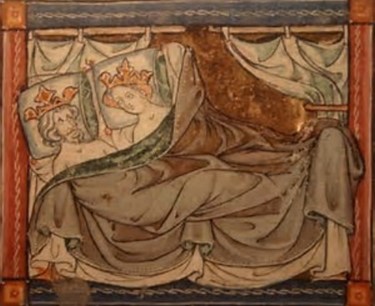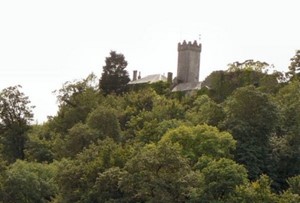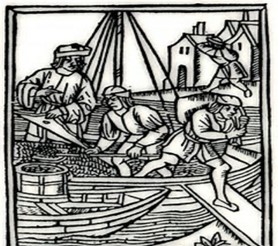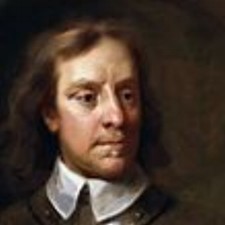History
History
CASTLES TO CROMWELL
With the death of Rhys ap Tewdwr, the ‘last King of the Britons,’ the door was open for powerful Norman barons to invade South East Wales, and the Vale of Glamorgan offered rich agricultural soils.
Robert Fitzhammon divided the Vale of Glamorgan between his knights and the area was soon under the control of the Normans. It was at this time that the village we now called Treoes was referred to as Goston, which probably derives from ‘Goose town’.
This section of our website covers the period from the 12th century when the Norman’s first exerted their control, through to the rise in power of Oliver Cromwell, when England and Wales were part of a Republic, and religious persecution of Catholics was at its height.
The pages in this section have been divided into:
Norman Conquest – how the division amongst Welsh Princes led to the conquest of Glamorgan
Goston – the original name of the village and how over the centuries it changed to Treos and then Treoes
Norman Lordships – the powerful Norman families who controlled land and power in the area
Welsh Royal Blood – a bloodline in Treoes that possibly goes back to ancient Welsh rulers
Owain Glyndwr – the Welsh uprising and the fierce battle of Stalling Down
The Tudors and Stuarts – life in Treoes during the 15th and 16th centuries
Trade and Commerce – as trade and travel increased, the influence of the English language begins to dominate
Religious Persecution – the persecution of Roman Catholics and the rise and fall of the Republic
NORMAN CONQUEST
With the death of Rhys ap Tewdwr in 1093 near Brecon, the door was open for Norman barons to sweep in the rich farmlands of South Wales.
In 1145 AD Rhys ap Tewdwr, the Prince of Deuheubarth (South West Wales) was at war with the lords of Glamorgan – Iestyn, Einon and Cedrych. Iestyn had made promises to Einon and Cedrych to encourage them to join him against Rhys. However, Rhys, was more powerful than the combined power of the three Lords, so Iestyn coerced one of the Norman Lords in to join them to defeat Rhys.
With the help of Sir Robert Fitzhammon, Rhys was defeated. Iestyn then reneged on his promises to Einon and Cedrych, who again enlisted the help of Sir Robert. Sir Robert emerged the victor and as a result divided the Kingdom of Glamorgan into manors shared among his knights and followers.
Treoes at this time was known as Goston and was contained within the manor of Corntown, which together with the Manor of Ogmore was ruled by Sir William Londres. Sir William built Ogmore Castle and founded the Benedict Priory at Ewenny.

Ogmore Castle

Aerial view of the Motte and Bailey castle at St Mary’s Hill Source: RCAHMW
Gelligarn belonged to Simon De Alweias (the family were later known as the De Haweys). Simon built a motte and bailey castle at Gelligarn to strengthen their hold over the area. These simple fortifications could be erected relatively quickly by the Normans. They consisted of a ditch and a banked circular enclosure, with a timber fort on the highest part. Simon was so harassed by Welsh raids, particularly from nearby Ruthin, that he exchanged his Knights fee for Gelligarn with the Cistercian monks at Neath Abbey. In return Simon received a far safer estate in Littleham in Devon.
The monks of Neath Abbey then established a sizeable Grange on the land, thus forming a buffer between the warring camps. The ruins of the dovecote at the Grange can still be seen.
GOSTON
How Goston became Treoes.
“Gos”, is found in many locations in England in and around marshy or water surrounded areas, for instance we have Gosford, Gosforth, Gosbeck etc., such areas were frequently surrounded by geese, probably of the wild variety, the name indicating a homestead or land rather than a settlement committed to rearing geese. The location of Goston in the Ewenny valley would have been similar.
About 1596/1600 there first appeared evidence of ‘Cymricisation’ (changing English names into Welsh), by the substitution of “Tref” at the start of a place name instead of “Ton” at the end. So Flemingston becomes Trefleming. The original pronunciation of Goston would be “Goeston” – preserving the long value in the vowel, so the Welsh form would have been pronounced Treos.
The process of Cymricisation was accelerated by the influence of the Welsh Methodist preachers who began to refer to Treos as Treoes, adding an additional ‘e’ to make the second part of the name ‘oes,’ meaning “lifetime or age. ”

Tithe map 1831
NORMAN LORDSHIPS
After the death of William de Londres, the Lord of Glamorgan, his extensive holdings were granted to the powerful Gilbert de Clare in 1217 AD.

Caerphilly Castle
The subjugation of Glamorgan, begun by Fitzhamon, was finally completed by the powerful De Clare family, who’s centre of power was the impressive Caerphilly Castle. At this time, the lowlands of Glamorgan were manorialized, whilst much of the isolated uplands were left under Welsh control, at least until the late 13th century.
With the death of the last Welsh ruler, LLewellyn ap Gryffydd in 1282 AD, Anglo Norman control over the whole country was secured – at least until the time of Owain Glyndwr!.
From the Middle Ages Llangan was bound manorially with Penlline – the old records associate Penlline, Llangan and Goston.
In 1435 Henry VI – bequeathed the Manor of Corntown, of which LLangan, Penllyn and Goston were a part, by virtue of a Royal Charter as follows:-
“To John and Joan Eyer and their heirs, if they failed to produce heirs then to David and Gwenllian Matthews for the terms of their lives and thereafter to their son Thomas Matthews and his male heirs forever. Should there be no such heirs, to the male heirs of David Matthews forever.”
As the Eyers died without heirs – the Manor fell to the Matthew family and hence to George Matthews who died on 14th November 1558. His heir was William Matthews aged 26 years.
Edward Rae held in tenure a parcel of the Manor of Corntown and Edward Carne, Thomas Matthews and Christopher Tuberville held the Manor of Llangan, Penlline and Goston in socage, that is a feudal tenure of land involving payment of rent or other non- military service to a superior.
St Mary Hill Fair was established sometime in this era, it was originally of a religious nature and was held on 15th August, the Feast of the Assumption of the Blessed Virgin Mary. Later on, the nature and the date of the fair changed it was held on 26th August and became a gypsy fair.

Depiction of a medieval fair
Given the good agricultural land in the area, the Normans established their corn growing manors here, based on the feudal system which was designed to enable a relatively small amount of aristocrats to dominate a large number of peasants. They controlled the law, religion, education, land tenure, coinage, the military and the ownership of weapons.
From the time of the Norman Conquest, roads ran out from Treoes, marking off the open fields from the common land. Moor Mill on Treoes Moors was the corn mill for Penlline, Llangan and Treoes. It is still possible to trace the old road called Heol-y-Millway running from Penlline to Treoes.
Treoes is of great antiquity and is a perfect example of a street or ribbon village dating back to the Middle Ages (David. J. Francis).
WELSH ROYAL BLOOD
Among the early residents of Goston was Sir Watkin (or Watcyn / Walter) Morton, Lord of Goston and Constable of Cardiff Castle.
He was born in 1370 and lived with his wife Gwenllian in Goston Manor, which was probably where Great House is now. They had a son John, born at Goston Manor about 1400.
Gwenllian and her sister Elizabeth were the last of the Welsh line of the Wallensis family (aka Wallleys/ Walsh/ Walshe/ Welsh) whose antecedants can be traced back to Princess Nest, the daughter of Rhys ap Tewdwr, the Prince of Dehuebarth in South West Wales. Rhys ap Tewdwr himself was a descendent of Hwyel Dda and Rhodri Mawr, both of whom were in turn referred to as ‘King of the Britons’.
Rhys ap Tewdwr’s daughter Nest was born in 1085 and was known for her great beauty. When her father was killed in battle near Brecon, she was taken to the English Court where she became the mistress of William 1st’s younger brother, Henry. Later, she was married to Gerald Fitzwalter de Windsor, the Constable of Pembroke.
After Gerald’s death she married Stephende Morisco the Castellan of Cardigan. Stephen had a son William Wallensis, whose mother was Hay, not Nest.

Nest and Henry (later Henry 1 of England)
It is thought that this is the William Wallensis who married Isobella, the granddaughter of Princess Nest and Gerald de Windsor. Therefore, Gwenllian Morton, nee Walsh, is a descendant of Princess Nest.
Gwenllian died in 1427. A sepulchral brass plaque was left in her memory in the church at Llandough, which had been built by the Wallensis family. The church has since been removed to a site in Leckwith.
Could this mean that more than 600 years ago a child, born in this village was a descendent of Rhodri Mawr, the first named king of Wales?
Goston Manor
If Watkyn Morton was Lord Goston, presumably there was a Manor House, but no one knows for certain where this was.
LiDAR imagery show that there was a moat around the property known as Persondy, which would signify that this was an important dwelling and needed to be protected from attack.
Since there are no records of other properties in the area having a moat, could this be the site of the original Goston Manor?

OWAIN GLYNDWR
Wales’ fight for independence and an inspirational leader
Owain Glyndwr (variously called Glendower, Glyn Dwr, and Owain ap Gruffydd) was a noble Welshman and a descendent of Llewelyn the Last. For most of his life he lived – and fought – as an Englishman, but around 1400 AD his growing sense of Welsh patriotic pride – and a squabble over land with his English neighbour – led him to raise an insuurection against the English in Wales.
In September, 1400 Glyndwr was proclaimed Prince of Wales. That same day he attacked Ruthin Castle, followed by raids on a succession of English strongholds in Wales. Initially the Welsh flocked to his banner, and Glyndwr successfully pushed back the startled English, aided by a few disaffected English lords. He briefly established a Welsh Parliament at Machynlleth. He also terrified some of his followers with his ferocity and disregard for the niceties of chivalry.

The colours of Owain Glyndwr displayed at Stalling Down
In 1403 Henry IV led a force of English troops into Glamorgan in a fresh attempt to overcome Glyndwr. The English met the Welsh and their French allies near Cowbridge, in a low field now called Stalling Down.
In a ferocious battle that lasted for fully 18 hours, the English and Welsh cut each other to bloody shreds. Though actual details of the battle are scarce, legend tells that the blood ran fetlock high on the horse’s legs, so fierce was the fighting. In the end, the Welsh were triumphant and Henry was forced to retreat.
Despite Glyndwr’s triumph, the English superiority in numbers wore down Welsh resistance in the end. Glyndwr and his men were pushed back to Harlech Castle, and when that stronghold fell, the Welsh cause was effectively lost. Glyndwr’s wife and children were captured and spent the rest of their lives imprisoned in London.
As for Glyndwr himself, a great mystery lurks around his fate. He lived the life of a fugitive for several years, and it is known that in 1415 he refused a pardon, but then he disappears from history.
Rumours abounded that he did not die, but sleeps, waiting to return when his country is at greatest need.
TUDORS AND STUARTS
The powerful Turberville family were based in Tytheston, but their wealth was greatly enhanced when they came into possession of Penlline Castle and its Manor by way of marriage.
Tomkin Tuberville married Lucy, daughter and co-heiress of the Norris family who held the Lordship of Penlline. This united the two large estates of Tytheston and Penlline.
Their eldest son, John Turberville, inherited the combined Tytheston and Penlline, but he allowed his younger brother Jenkin to remain in Penlline. When John died in 1533 his daughter Gwenllian, who was married to Walter Lougher, claimed her inheritance of Penlline Castle, but Christopher Turberville, the son of Jenkin Turberville and resident at Penlline, challenged Gwenllian’s claim. This caused a major rift between the Lougher and Tuberville family.

Penlline Castle, built on a high ridge
Watkin Lougher enlisted the help of his two sons-in-law Robert Stradling and his illegitimate brother, also Robert Stradling, both sons of Sir Edward Stradling. With 100 armed men they seized Tytheston and set Penlline ablaze.
“Christopher Turberville fled from the flames receiving a great pellet of lead through the hose, which had it entered his thigh would have murdered him”. A servant was less fortunate and was killed.
Robert Stradling, who resided in Treoes, attended the Star Chamber proceedings in 1527 and described to the court the:
“riotous and forceful manner in which Christopher Turberville , accompanied by about 25 riotous persons armed with longbows, arrows and other weapons tried to take possession of the Manor of Penllyn , when he countered claimed to ownership by his cousin – the daughter of John Turberville.”
The matter was eventually resolved by the courts. The first decision of the courts on June 19th 1535 gave the reversion of the whole property, in default of heirs, to the survivor of the two cousins, i.e. Christopher Turberville and Gwenllian Lougher. It ordered all original deeds to be held in a locked box in Neath Abbey.
Eleven years later, a final award was made on 20th June 1546 as follows:
To Christopher Turberville: – The manors of Penlline, North Cornelly, Newcastle, Kenfig, Ogmore with manor of Llangan and Court-y-Gwilliam.
To Gwenllian :- All the lands of her mother, Alice , reversion of the fourth part of West Orchard then held by Margaret Haws. Gwenllian and her son Richard:-Tytheston, Laleston and Merthyr Mawr, the reversion of the manor of Newton Nottage with 38 acres at Wick.
Named among the residents of Treoes around this time were :
- Margaret Stradling a widow who died in 1667
- Morgan John described as an Elder, who died in 1670
- Edward Gamage described as a Gent who died in 1671
- William Stradlinge a Gent
- Phillip Powell a Yeoman.
The Stradlings were also a staunch Catholic family. No. 3 Sunnyside has a priest hole, often found in the homes of Catholics at that time so it is possible that this was the home of the Stradling family of Treoes.
Many of the houses in the village were little more than wooden huts erected on the understanding that if they could build a one up- one down building overnight, then they had the right of undisturbed possession. This was indeed the case if a house was erected by a squatter overnight on waste or common ground, then he had the right of undisturbed possession,
The Erection of Cottages Act 1588 dealt with this by prohibiting the building of a cottage without 4 acres assigned to it of the freehold land belonging to the person responsible for its construction. In 1601 an act was passed that gave churchwardens and overseers’ permission to allow the building of such dwellings for the poor, with the consent of the lord of the Manor.
TRADE AND COMMERCE
As trade expanded, English became increasingly the language of commerce and the law.
Passengers as well as commodities were transported to the West Country on boats from the Glamorgan creeks. The toll of three pence per passenger to and from Wales was payable at Porlock or Minehead.
Edmund Gamage Rector of Coychurch and son of Edward Gamage of Treoes, described the language used locally as: “the language is partly English and partly Welsh, our trading being for the most part with Somer and Devon shires, we spoil our Welsh”.

Depiction of trading boat
There was a reported court case in Bristol on 27th July 1646 which included the following:
“John Morgan of Bridgend in the County of Glamorgan husbandman deposeth upon his oathe…That he was present in the companie upon Friday last in the afternoon at the signe of the Phoenix in Baldwwins streete Bristoll together with John Baughe of Bristoll whitetawer and one James Llewellin of Bridgend glover, which said James had then a parcel of rawe Calveskinnes lyng aboard the barque of Newton at the Backe in Bristoll and heard the said Baughe and Llewellin bargaining for the said skines. And in conclusion they agreed for seven shillings the dozen and did shake hands upon the agreement. And Mr Baughe offered him earnest but Llewellin received none but they agreed that the next morning they would meet againe to deliver the goods and receive the monie(s)…“.
This passage shows the changing relationship between the Welsh and English, that they could communicate and trade with each other. It also highlights the early Anglicisation of the Welsh language in the south of Glamorgan.
The Jenkins Estate held the deeds of properties in Llangan, one of which was for 100 years, dating from the 25th March 1778 for three shillings and five pence annual rent.
The Right Honourable Lady Charlotte Edwin of St. Georges, Hanover Square, Middlesex, widow – to John David of Coity, Breeches maker – owned a piece of land on Treoes Moor called Gwain Treoes, which was in the occupation of John Rosser, also a ruined tucking mill and pieces of rough ground called the Hammers and Tir-y-Pandy, and also lands called Y Cogwell situated near to Goston Village (Treoes).
Tucking is a step in woollen cloth-making which involves the cleansing of cloth to eliminate oils, dirt and other impurities, making it thicker. The Welsh word for a Tucking Mill is Pandy, hence Tir-y-Pandy, Land of the Tucking Mill. In these mills the cloth was beaten with wooden hammers.
RELIGIOUS PERSECUTION
Throughout the reigns of Elizabeth I and James II Catholics were persecuted by law for practising their faith. In 1598 it was reported that Cardiff Goal was crowded with Catholics.
The Norman Lords were staunch Catholics and when the religious persecution was at its height there was not a week went by that one Tuberville or another was not in prison for practising his religion. Priest Holes were built into the homes of the better off Catholics.
Priests would live with families, as did Morgan Clynnog, a missionary priest who lived with the Turberville’s in Penlline (D.J Francis). Sometimes these priests would escape capture by pretending to be servants. Not so lucky was John Lloyd a seminary priest found to be in Penlline Castle on the 4th November in the thirtieth year of the reign of King Charles II. He was executed with Father Phillip Evans, found at Sker House, as traitors, on 22nd July 1679. The mode of execution described as follows:
“First they were dragged on hurdles to the gallows. Then they were hanged for a few moments. Before they were dead they were cut down, disembowelled alive, and dismembered”.
Oliver Cromwell set out to destroy the old religious system and replace it by converting the Welsh people to Puritanism. The Anglican clergy were ejected. More than 278 clergymen were removed from their living.
In 1658 the death of Oliver Cromwell led to the Restoration of the Monarchy, ending 11 years of republicanism and the return of our clergy to their livings.

Oliver Cromwell
One of the most unfortunate was Edward Gamage of Treoes, the Rector of Llanharry – he was the person who suffered most in Llanharry. As he was finishing harvesting his fields, his Glebe land, glebe corn and rectory were seized by the Puritans. He was turned out of his home and everything was taken from him. He retired to Treoes with a small pittance of his own, until the Restoration, upon which he was able to return to his living in Llanharry. Alas, he enjoyed it for but a little while, in ill health he was forced to return to Treoes, where he died in 1671.



